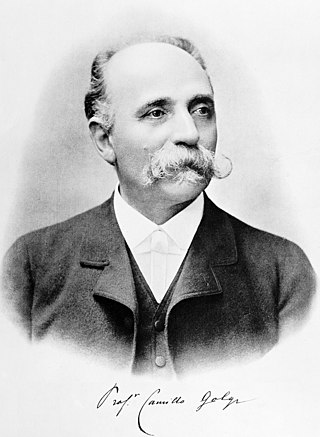
Camillo Golgi was an Italian biologist and pathologist known for his works on the central nervous system. He studied medicine at the University of Pavia between 1860 and 1868 under the tutelage of Cesare Lombroso. Inspired by pathologist Giulio Bizzozero, he pursued research in the nervous system. His discovery of a staining technique called black reaction in 1873 was a major breakthrough in neuroscience. Several structures and phenomena in anatomy and physiology are named for him, including the Golgi apparatus, the Golgi tendon organ and the Golgi tendon reflex.

Plasmodium is a genus of unicellular eukaryotes that are obligate parasites of vertebrates and insects. The life cycles of Plasmodium species involve development in a blood-feeding insect host which then injects parasites into a vertebrate host during a blood meal. Parasites grow within a vertebrate body tissue before entering the bloodstream to infect red blood cells. The ensuing destruction of host red blood cells can result in malaria. During this infection, some parasites are picked up by a blood-feeding insect, continuing the life cycle.

Parasitology is the study of parasites, their hosts, and the relationship between them. As a biological discipline, the scope of parasitology is not determined by the organism or environment in question but by their way of life. This means it forms a synthesis of other disciplines, and draws on techniques from fields such as cell biology, bioinformatics, biochemistry, molecular biology, immunology, genetics, evolution and ecology.

Plasmodium falciparum is a unicellular protozoan parasite of humans, and the deadliest species of Plasmodium that causes malaria in humans. The parasite is transmitted through the bite of a female Anopheles mosquito and causes the disease's most dangerous form, falciparum malaria. It is responsible for around 50% of all malaria cases. P. falciparum is therefore regarded as the deadliest parasite in humans. It is also associated with the development of blood cancer and is classified as a Group 2A (probable) carcinogen.
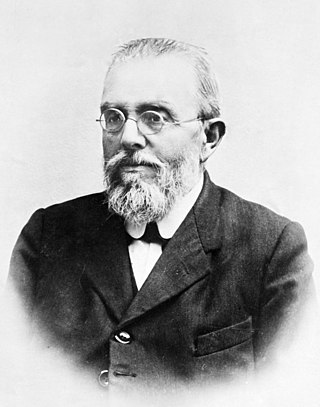
Giovanni Battista Grassi was an Italian physician and zoologist, best known for his pioneering works on parasitology, especially on malariology. He was Professor of Comparative Zoology at the University of Catania from 1883, and Professor of Comparative Anatomy at Sapienza University of Rome from 1895 until his death. His scientific contributions covered embryological development of honey bees, on helminth parasites, the vine parasite phylloxera, on migrations and metamorphosis in eels, and on termites. He was the first to describe and establish the life cycle of the human malarial parasite, Plasmodium falciparum, and discovered that only female anopheline mosquitoes are capable of transmitting the disease. His works in malaria remain a lasting controversy in the history of Nobel Prizes, because a British army surgeon Ronald Ross, who discovered the transmission of malarial parasite in birds was given the 1902 Nobel Prize in Physiology or Medicine. But Grassi, who demonstrated the complete route of transmission of human Plasmodium, and correctly identified the types of malarial parasite as well as the mosquito vector, Anopheles claviger, was denied.

The Plasmodiidae are a family of apicomplexan parasites, including the type genus Plasmodium, which is responsible for malaria. This family was erected in 1903 by Mesnil and is one of the four families in the order Haemospororida.

Plasmodium ovale is a species of parasitic protozoon that causes tertian malaria in humans. It is one of several species of Plasmodium parasites that infect humans, including Plasmodium falciparum and Plasmodium vivax which are responsible for most cases of malaria in the world. P. ovale is rare compared to these two parasites, and substantially less dangerous than P. falciparum.

Plasmodium malariae is a parasitic protozoan that causes malaria in humans. It is one of several species of Plasmodium parasites that infect other organisms as pathogens, also including Plasmodium falciparum and Plasmodium vivax, responsible for most malarial infection. Found worldwide, it causes a so-called "benign malaria", not nearly as dangerous as that produced by P. falciparum or P. vivax. The signs include fevers that recur at approximately three-day intervals – a quartan fever or quartan malaria – longer than the two-day (tertian) intervals of the other malarial parasite.

Plasmodium knowlesi is a parasite that causes malaria in humans and other primates. It is found throughout Southeast Asia, and is the most common cause of human malaria in Malaysia. Like other Plasmodium species, P. knowlesi has a life cycle that requires infection of both a mosquito and a warm-blooded host. While the natural warm-blooded hosts of P. knowlesi are likely various Old World monkeys, humans can be infected by P. knowlesi if they are fed upon by infected mosquitoes. P. knowlesi is a eukaryote in the phylum Apicomplexa, genus Plasmodium, and subgenus Plasmodium. It is most closely related to the human parasite Plasmodium vivax as well as other Plasmodium species that infect non-human primates.
Plasmodium bigueti is a parasite of the genus Plasmodium.

Amico Bignami was an Italian physician, pathologist, malariologist and sceptic. He was professor of pathology at Sapienza University of Rome. His most important scientific contribution was in the discovery of transmission of human malarial parasite in the mosquito.

Angelo Celli was an Italian physician, hygienist, parasitologist and philanthropist known for his pioneering work on the malarial parasite and control of malaria. He was Professor of Hygiene at the University of Palermo, and then at the Sapienza University of Rome. He founded the Pasteur Institute of Italy. With his wife Anna Fraentzel he established a number of medical schools in the Roman Campagna and dispensaries in Rome. He and Ettore Marchiafava correctly described the protozoan parasite that caused malaria and gave it the scientific name Plasmodium in 1885. Understanding the nature of malaria, he was among the first scientists to advocate and work for eradication of insects to prevent infectious diseases. He was elected to the Senate of the Kingdom of Italy in 1892.
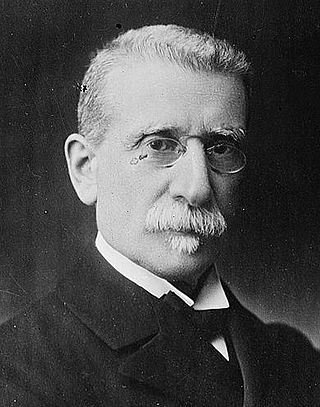
Ettore Marchiafava was an Italian physician, pathologist and neurologist. He spent most of his career as professor of medicine at the University of Rome. His works on malaria laid down the foundation for modern malariology. He and Angelo Celli were the first to elucidate living malarial parasites in human blood, and able to distinguish the protozoan parasites responsible for tertian and benign malaria. In 1885 they gave the formal scientific name Plasmodium for these parasites. They also discovered meningococcus as the causative agent of cerebral and spinal meningitis. Marchiafava was the first to describe syphilitic cerebral arteritis and degeneration of brain in an alcoholic patient, which is now eponymously named Marchiafava's disease. He gave a complete description of a genetic disease of blood now known Paroxysmal nocturnal hemoglobinuria or sometimes Strübing-Marchiafava-Micheli syndrome, in honour of the pioneer scientists. He was personal physician to three successive popes and also to House of Savoy. In 1913 he was elected to Senate of the Kingdom of Italy. He founded the first Italian anti-tuberculosis sanatorium at Rome. He was elected member of the Accademia dei Lincei, becoming its vice-president in 1933.
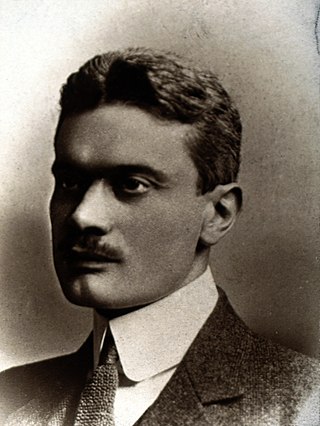
Giuseppe Bastianelli was an Italian physician and zoologist who worked on malaria and was the personal physician of Pope Benedict XV.

The history of malaria extends from its prehistoric origin as a zoonotic disease in the primates of Africa through to the 21st century. A widespread and potentially lethal human infectious disease, at its peak malaria infested every continent except Antarctica. Its prevention and treatment have been targeted in science and medicine for hundreds of years. Since the discovery of the Plasmodium parasites which cause it, research attention has focused on their biology as well as that of the mosquitoes which transmit the parasites.
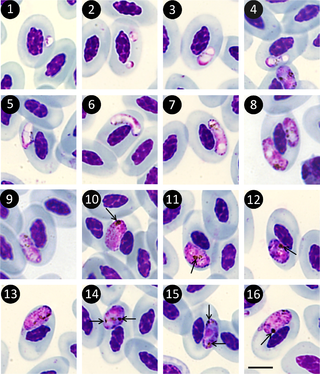
The Haemosporida are an order of intraerythrocytic parasitic alveolates.
Plasmodium brasilianum is a parasite that infects many species of platyrrhine monkeys in South and Central America.

Quartan fever is one of the four types of malaria which can be contracted by humans.















